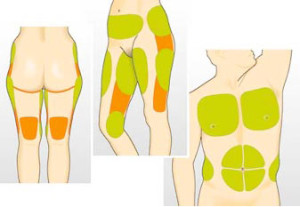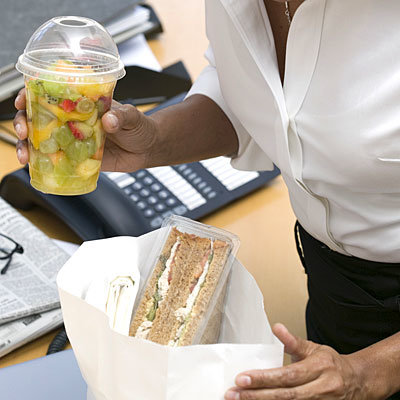7 Step Weight Loss Troubleshooting Plan
When you make a real commitment to changing your eating habits, it should only take a matter of days before your body starts to show you some changes. But, if you aren’t noticing changes, it may be time to troubleshot. The majority of the time, your problem will be something simple to correct. Ask yourself the following questions to get the ball, and your fat loss, rolling.
Are you:
1. Eating too much fruit?
Fruit is high in fructose. While you should be eating some fruit, eating too much could cause trouble with your insulin levels. A perfect serving size is a handful of berries or chopped fruit, or half of a larger piece of fruit like a grapefruit or an apple.
2. Eating too many nuts?
Nuts are great snacks when on a diet because of their protein and healthy fat content but it is important to eat them in moderation. A closed handful should be enough.
3. Keeping foods on the “no” list in your kitchen?
Don’t keep chips, cookies or your favourite high-carb treats on hand. They will only tempt you to cheat. Donate them or throw them away.
4. Skipping the fat?
All fats are not created equal. If you include the right amounts of healthy fats in your diet, it can actually help you lose weight!
5. Eating too much healthy fat?
It is true, you can have too much of a good thing. If your healthy fat is in liquid form, your serving should be roughly the size of a ping-pong ball which is around 1 tablespoon. When your healthy fat is in the form of nuts, coconut flakes, olives or seeds, your serving should be the size of a closed handful. If you are adding avocado to your meal, your serving is a quarter to a half of the avocado. A serving of coconut milk is a third to a half of a can. Every meal should include 1 to 2 servings of fat!
7 Step Weight Loss Troubleshooting Plan Click To Tweet6. Not measuring your other foods properly?
Remember this: don’t overdo proteins and don’t rip yourself off when it comes to non-starchy vegetables.
For your proteins: A serving of meat, fish, or poultry should be about the size and thickness of your palm. A serving of eggs should be as many as you can hold in your hand. Usually 2-3 for women and 3-4 for men. You can double this serving size if you are eating egg whites only. Every meal should include a protein.
For your non-starchy veggies: A serving of these should be at least the size of a softball. You can’t eat too many. Load your plate with a couple of softball size portions.
For your starchy veggies: A serving of starchy vegetables should be the size of a baseball for women and a softball for men. Remember, only eat starchy vegetables if you are recovering from a workout or feel tired and weak.
For your fruit portions: A fruit serving is half a piece like in the case of apples and oranges or it is a tennis ball size serving of berries, grapes or tropical fruits. If the fruit is diced, that’s equivalent to a closed fistful or a half cup. Eat no more than 2 servings of fruit a day and spread them out between your meals and snacks to keep your sugar levels in check.
7. Not completely letting go?
Hanging on to that food or drink that you just can’t say no to is only going to impede your fat loss. Don’t be afraid to ditch it completely.
Does this sound like the perfect troubleshooting guide for your diet? After troubleshooting these problems, if you still feel like you need some help, have a look at the BodyRock Meal Plan. This guide contains 30 days worth planned meals and snacks, a detailed nutrition guide, and an added recipe book with over 70 offerings. Let us help you get to where you want to be!
Source: Rodale Wellness
-
Lose the Excess Weight in Six Weeks or Less
Being overweight or obese has been a problem for people ever sinc
-
The Truths About Fast Weight Loss And Other Benefits Through Self Hypnosis
Self hypnosis offers many benefits including fast weight loss. The b
-
The Diet Solution Programme System – Suitable For Unwanted Fat
So what is the diet solution program that will deliver the results so
-
If Youre Still Fat Then Blame Your Diet
Everyone knows the things they have to d
-
Weight Loss Blogs Worth Reading
The New Year has come and gone and there is no doubt that a good numbe
-
Simply 100: A Quick Abdominal Blast
Sometimes you just dont even have 10 minutes to work out but y
- DON'T MISS
- A Weightloss Diet That Works
- New Japanese 2-Day Diet - A Natural Alternative
- The Boise Weight Loss Clinic presents The Sleep-Weight Loss Connection
- The Process Of Becoming Healthy Make The Decision To Start The Journey
- Weight Loss: Goal-Setting for Success
- Avoid High Calorie Foods and Beverages if You Want to Lose Weight
- Recover from Compulsive Eating Disorder Permanently
- 5 Natural Tips To Help You Recover From The Flu
- What does your saliva say about your health?
- The 31 Day Fat Loss Cure Review: Is it Really a Cure?




